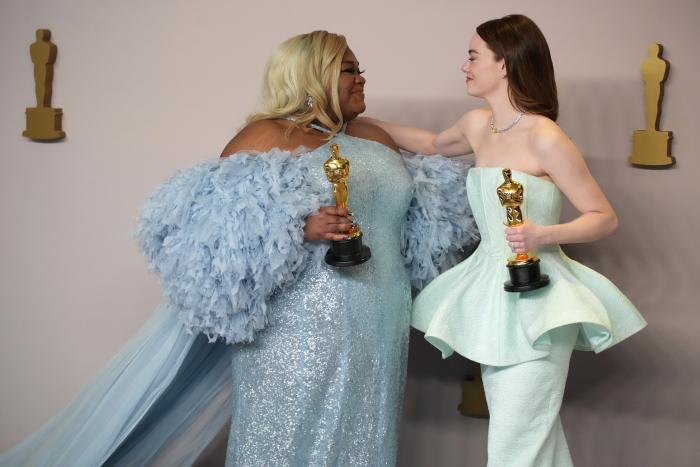

Tim Burton Mansplains The Life of Margaret Keane: 'Big Eyes' Review
By Kristy Puchko | Film | December 23, 2014 |
By Kristy Puchko | Film | December 23, 2014 |
Let’s take a minute to appreciate the director Tim Burton has broken out of his comfort zone. His latest film does not include Johnny Depp, gallons of white pancake make-up, sets strung out in stripes, or an outcast with daddy issues.

Sadly, this is about the most I commend Burton for with Big Eyes. His typical aesthetic is chucked, but what replaces it is a lackluster color palette, with little style besides the occasional human VFXed to make their eyes look large like the titular paintings. A biopic made to uncover the scandalous story behind this art craze that swept the world in the 1950s, Big Eyes fails to provide much in the way of insight, emotion, or importance.
Amy Adams stars Margaret, a mother who is fleeing her unseen — but presumably awful — first husband in the film’s opening as Danny Huston tells us in voiceover women didn’t have the same options as men in the 1950s, don’t cha’ know! Huston plays a journalist in the film, but his main role is mansplaining the narrative when the actual scenes fail to. As Margaret meets the schmoozing con artist Walter Keane, you might immediately wonder how she could rush to marry such a man, who oozes charisma and sleaze in equal measure. Or you may ponder why she’d let him take the credit for her paintings when she’s so proud of them. You might question why Margaret toils away on them in secret for years, isolating herself from her daughter and friends. Well, Huston’s here to explain, ‘Women, amirite?’
In theory Big Eyes is a movie about Margaret D.H. Keane. But the script by Scott Alexander and Larry Karaszewski makes her so timid and inactive, it feels wrong to call her a “protagonist.” Instead, Christoph Waltz as the scheming Walter runs away with this movie. His character is at once unnerving and charming, so it’s Waltz’s established shtick, crazy yet cool. It’s fun to watch, even when it seems he’s in an entirely different movie from the rest of the cast, a human cartoon surrounded by sullen ghosts.
To be frank, I wonder why Adams signed on to this project at all. The script gives her little to do beyond whimper and look bewildered. It’s a waste of her talents, and our time. Burton fails to unfurl Margaret Keane’s life in a compelling way, leaving bizarre gaps (like why is she fleeing from her first husband as the movie opens) and getting so caught up in the craze over her paintings and Walter’s celebrity that you might well forget it’s Margaret’s movie. And yet for all this time spent on the popularity of her “big eyes” paintings, the film can’t seem to decide if they are art or kitsch, worthy of praise or scorn. There’s one-dimensional characters flooding the film to serve as mouth pieces for both points of view, but Burton’s third act shelves the question altogether, finally remembering this is meant to be a biopic. So, back to Margaret for a finale that is confounding and unsatisfying.
The broad strokes of Keane’s story were intriguing. But the questions about who she is and what her motives were for conspiring with her second husband remain as much a mystery now as they did before I saw Big Eyes. Leading me to wonder, really—what was the point?
← 'The Legend Of Korra' Creators Confirm Korrasami | Robert Kirkman Says That Daryl Dixon Is Not Safe on 'The Walking Dead' →

What’s Old Is New Again: Old Hollywood Glamour Glitters at the 2024 Oscars
Al Pacino Presents Best Picture Oscar, Confuses Everyone
The Dangerous Lie Of 'TradWives'
A Legendary Horror Franchise Is Headed To Television
'The Mandalorian' Season 4 Is Probably Not Happening
Halle Bailey On Why She Chose To Keep Her Pregnancy Private
More Like This
Kyle Mooney's Horror-Comedy 'Y2K' Goes Too Hard on Kyle Mooney's Sense of Humor
'Imaginary' Almost Sucks
Box Office Report: Kung Fu Sandworms
The 2024 Oscars Were Great Right Up Until the End
Kristen Stewart's 'Love Lies Bleeding' Is Gonna Kick Your Ass And Make You Beg For More
Reviews